ASM Metals HandBook Vol. 14 - Forming and Forging
Подождите немного. Документ загружается.

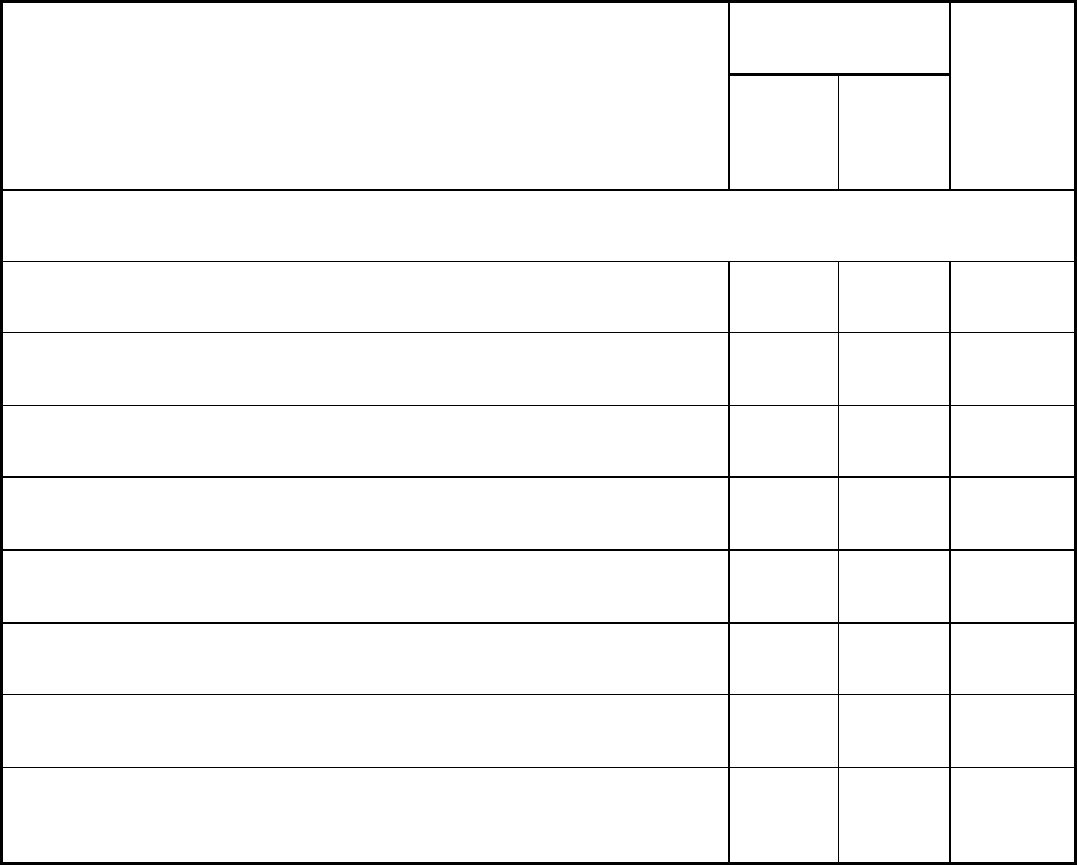
Any lubricant must remain stable, without becoming rancid, when stored for a period of several months at various
temperatures. The cost of application and removal of the lubricant, as well as its initial cost, must be considered because
all of these items can add substantially to the cost of the drawn workpieces.
In some plants, when a new application is started, a heavily pigmented drawing lubricant is used, regardless of the
difficulty of applying and removing it. Lubricant is then downgraded as much as possible to simplify the operation and to
reduce costs. In other plants, the reverse of this practice is used; that is, a simple lubricant, such as machine oil, is used at
first, and lubricant is then upgraded when necessary.
The difficulty of removing drawing lubricants is an important consideration in production operations. In a number of
applications, changes in drawing techniques (such as increasing the number of draws) or in workpiece design (larger radii,
for example) have been made solely to permit the use of an easier-to-remove drawing lubricant. Methods of removing
lubricants are discussed in the section "Cleaning of Workpieces" in this article.
Typical lubricants used in drawing steel are given in Table 3 according to severity of draw or the percentage of reduction
from blank to cup diameter. Zinc phosphate conversion coating of the steel to be drawn is helpful for any drawing
operation, and the importance of phosphate coating increases as the severity of the draw increases. Methods of application
and other details on the use of phosphate conversion coatings are discussed in the article "Phosphate Coatings" in Surface
Engineering, Volume 5 of the ASM Handbook.
Table 3 Lubricants commonly used for the drawing of low-carbon steel
Severity is indicated by the percentage of reduction in diameter in drawing a cylindrical shell.
Ease of removal by: Type or composition of lubricant
Water-
base
cleaners
Degreasers
or solvents
Protection
against
rusting
Water-base lubricants
Low severity (10% or less)
Water emulsion of 5-20% general-purpose soluble oil or wax
Very good Good
Fair
Moderate severity (11-20%)
Water solution of 5-20% soap
Very good Very poor
Fair
Water emulsion of heavy-duty soluble oil (contains sulfurized or chlorinated additives)
Very good Good
Fair
High severity (21-40%)
Soap-fat paste, diluted with water (may contain wax)
Fair Poor
Fair
Water emulsion of heavy-duty soluble oil (contains a high concentration of sulfurized or
chlorinated additives)
Very good Good
Fair to poor
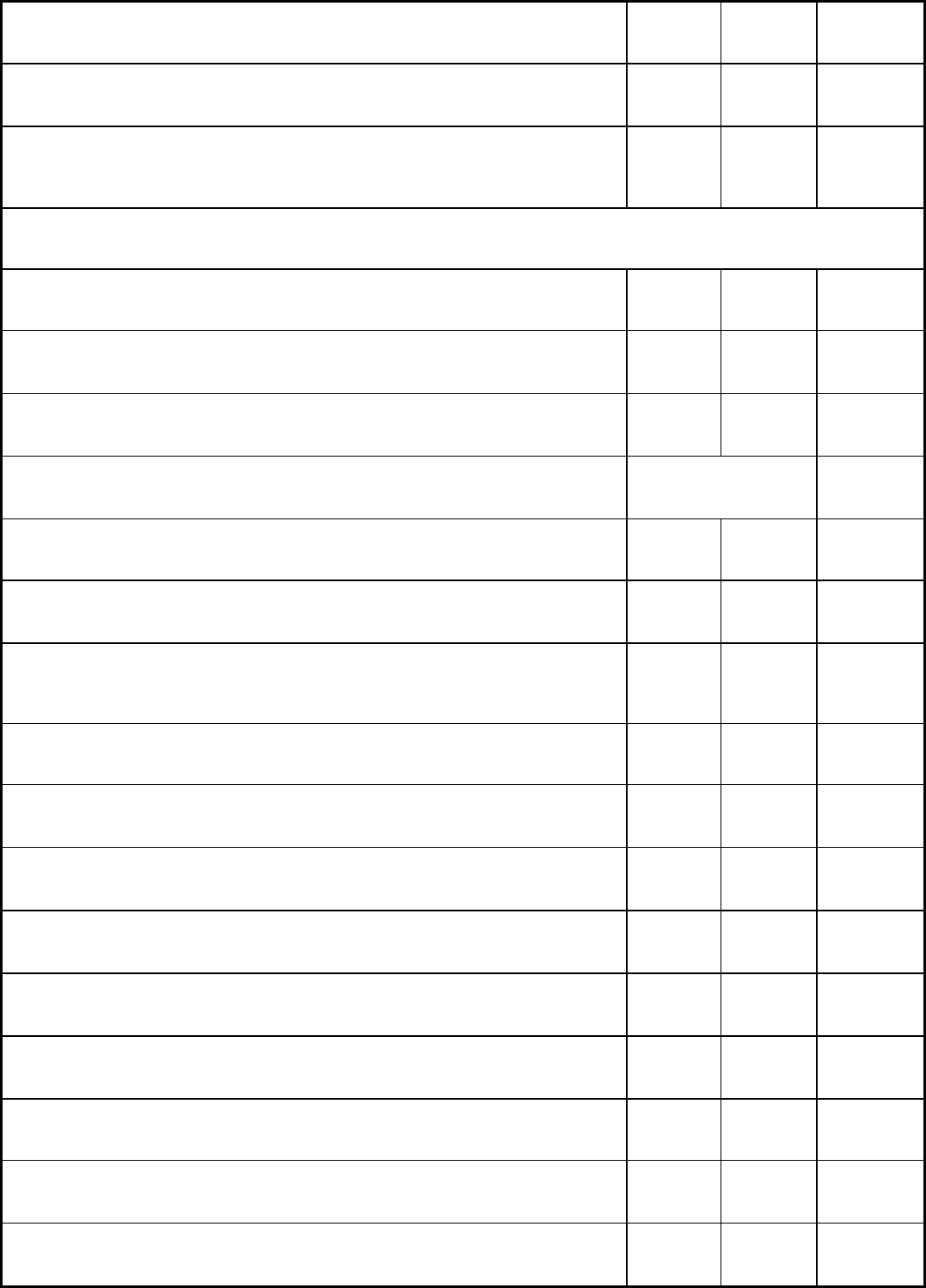
Maximum severity (>40%)
Pigmented soap-fat paste, diluted with water
Poor Very poor
Good
Dry soap or wax (applied from water solution or dispersion); may contain soluble filler
such as borax
Good Very poor
Good
Oil-base lubricants
Low severity (10% or less)
Mill oil, residual
Good Very good
Fair
Mineral oil
Good Very good
Fair
Vanishing oil
Removal not required
. . .
Moderate severity (11-20%)
Mineral oil plus 10-30% fatty oil
Good Very good
Fair
Mineral oil plus 2-20% sulfurized or chlorinated oil (extreme-pressure oil)
Good to
fair
Good
Fair to poor
High severity (21-40%)
Fatty oil
Fair Fair
Fair
Mineral oil plus 5-50% of:
(a) Nonemulsifiable chlorinated oil
Poor Good
Very poor
(b) Emulsifiable chlorinated oil
Good Good
Very poor
Concentrated phosphated oil
Fair Fair
Fair
Maximum severity (>40%)
Blend of pigmented soap-fat paste with mineral oil
Poor Poor
Fair
Concentrated sulfochlorinated oil (may contain some fatty oil):

(a) Nonemulsifiable
Very poor Fair
Poor
(b) Emulsifiable
Good Fair
Poor
Concentrated chlorinated oil:
(a) Nonemulsifiable
Very poor Fair
Very poor
(b) Emulsifiable
Good Fair Very poor
Deep Drawing
Materials for Deep Drawing
Sheet steels and other sheet metals with higher strengths and better formability have recently become available.
Developments such as vacuum processing and inclusion shape control have been especially beneficial in increasing the
drawability of steels. Other metals and alloys that can be deep drawn include aluminum and aluminum alloys, copper and
alloys, some stainless steels, and titanium.
Low-carbon sheet steels are the materials that are most commonly deep drawn and are commonly used, for example,
in the automotive industry. Materials such as 1006 and 1008 steel have typical yield strengths in the range of 172 to 241
MPa (25 to 35 ksi) and elongations of 35 to 45% in 50 mm (2 in.). These materials have excellent formability and are
available cold or hot finished in various quality levels and a wide range of thicknesses. Table 4 lists mechanical properties
of the various qualities of carbon steel sheet.
Table 4 Typical mechanical properties of low-carbon sheet steels
Tensile
strength
Yield
strength
Quality level
MPa
ksi
MPa
ksi
Elongation, %
in 50 mm (2 in.)
Plastic-strain
ratio, r
Strain-hardening
exponent, n
Hardness,
HRB
Hot rolled
Commercial quality 358 52 234 34 35 1.0 0.18
58
Drawing quality 345 50 220 32 39 1.0 0.19
52
Drawing quality, aluminum killed
358 52 234 34 38 1.0 0.19
54
Cold rolled, box annealed
Commercial quality 331 48 234 34 36 1.2 0.20
50
Drawing quality 317 46 207 30 40 1.2 0.21
42
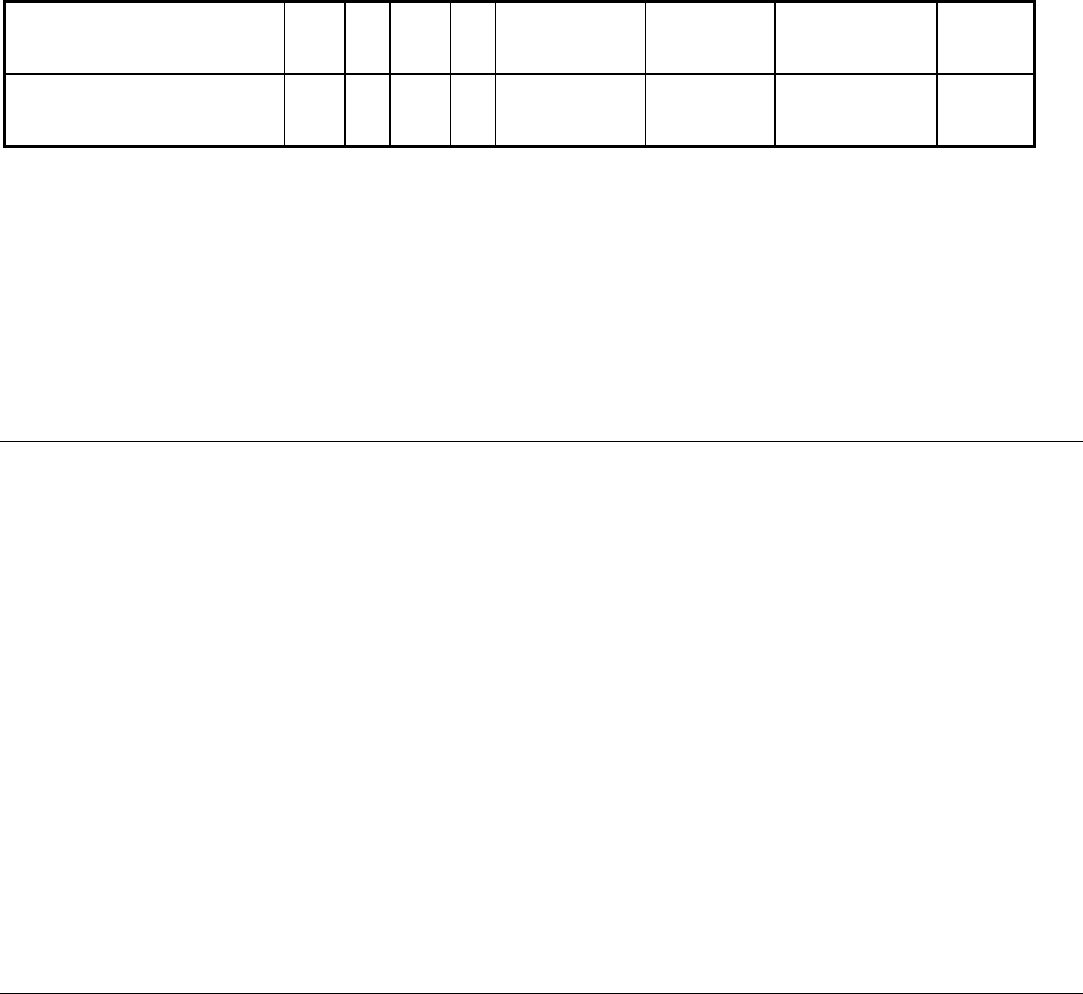
Drawing quality, aluminum killed
303 44 193 28 42 1.5 0.22
42
Interstitial-free 310 45 179 26 45 2.0 0.23 44
Other low-carbon steels that are commonly deep drawn are grades 1010 and 1012. These materials are slightly stronger
than 1006 and 1008 and are slightly less formable. They are often specified when drawing is not severe and strength of
the finished part is of some concern.
Grain size affects the drawability of these materials, and it may affect the selection of a grade. Grain sizes of ASTM 5 or
coarser may result in excessive surface roughness as well as reduced drawability.
Surface finish also influences drawability. The dull finish normally supplied on drawing steels is designed to hold
lubricants and to improve drawability. Brighter finishes may be required if, for example, parts are to be electroplated.
Deep Drawing
Effects of Materials Variables
Anisotropy. As mentioned earlier in this article, there are two types of anisotropy that must be considered: planar
anisotropy, in which properties vary in the plane of the sheet, and normal anisotropy, in which the properties of the
material in the thickness direction differ from those in the plane of the sheet.
Planar anisotropy (variations in normal anisotropy in the plane of the sheet) causes undesirable earing of the work
material during drawing. Between the ears of the cup are valleys in which the material has thickened under compressive
hoop stress rather than elongating under radial tensile stress. This thicker metal sometimes forces the die open against the
blankholder pressure, allowing the metal in the relatively thin areas near the ears to wrinkle. Die design, draw reduction,
and type of lubricant used all affect earing (see the section "Effects of Process Variables" in this article).
Sheet Thickness. In deep drawing, the pressure on the dies increases proportionally to the square of sheet thickness.
The pressure involved is concentrated on the draw radius, and increasing sheet thickness will localize wear in this area
without similar effect on other surfaces of the die.
Thick stock has less tendency to wrinkle than thin stock. As a result, blankholder pressures used for the drawing of thick
sheet may be no greater, and may even be less, than those used for thinner blanks.
Deep Drawing
Direct Redrawing
In direct redrawing in a single-action die, the drawn cup is slipped over the punch and is loaded in the die, as shown in
Fig. 12. At first, the bottom of the cup is wrapped around the punch nose without reducing the diameter of the cylindrical
section. The sidewall section then enters the die and is gradually reduced to its final diameter. Metal flow takes place as
the cup is drawn into the die so that the wall of the redrawn shell is parallel to, and deeper than, the wall of the cup at the
start of the redraw. At the beginning of redrawing, the cup must be supported and guided by a recess in the die or by a
blankholder to prevent it from tipping, because tipping would result in an uneven shell.
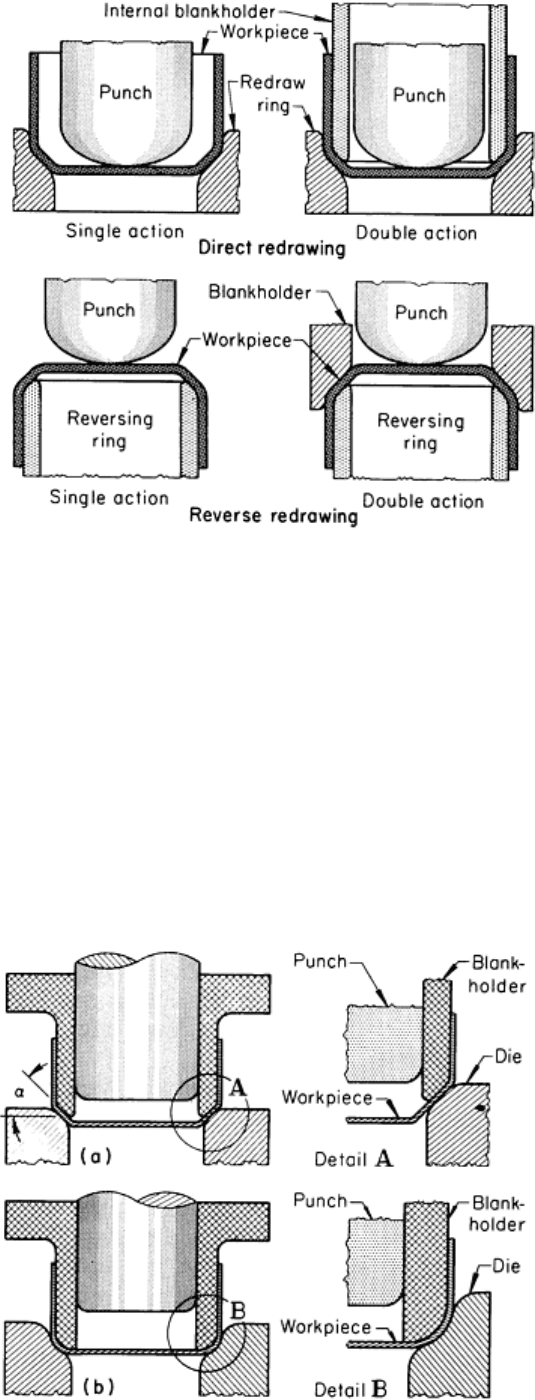
Fig. 12 Direct and reverse redrawing in single-action and double-action dies
In a single-action redraw, the metal must be thick enough to withstand the compressive forces set up in reducing the cup
diameter without wrinkling. Wrinkling can be prevented by the use of an internal blankholder and a double-action press
(upper right, Fig. 12), which usually permits a shell to be formed in fewer operations than by single-action drawing
without the use of a blankholder.
Internal blankholders (Fig. 13) are slip fitted into drawn shells to provide support and to prevent wrinkling during direct
redrawing. The blankholder presses on the drawn shell at the working edge of the die before the punch contacts the
bottom of the shell and begins the redraw. It dwells against the shell as the metal is drawn into the die by the punch,
preventing wrinkles.
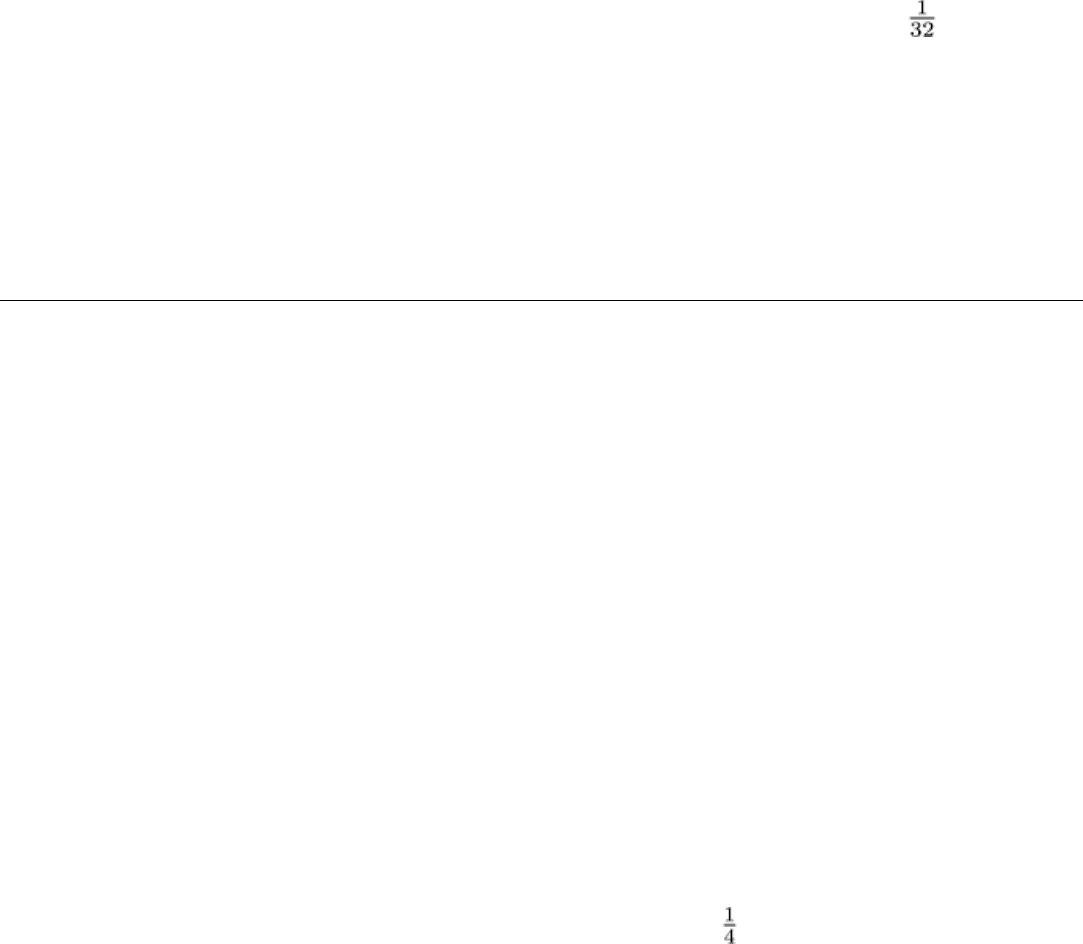
Fig. 13 Setups using internal blankholders for restraint of work metal in redrawing shells. See text for details.
The bottom of the cup to be redrawn can be tapered (Fig. 13a) or radiused (Fig. 13b), with the tip of the blankholder and
the mouth of the die designed accordingly. An angle of 30° is used for metal thinner than 0.8 mm ( in.), and 45° is
used for thicker work metal. A modification of the above is a blankholder fitted against an S-curve die (Fig. 13b). The
main disadvantage of an S-curve die is that it is more expensive to make and maintain. Near the bottom of a redrawn
shell, there is usually a narrow ring, caused by the bottom radius of the preceding shell, that is thinner and harder than the
adjacent metal. Redrawing may be required for reasons other than the severity of the drawn shape--for example, to
prevent thinning and bulging.
Redrawing can also be done in a progressive die while the part is still attached to the strip. Where space permits the extra
stations, the amount of work done in each station will be less than that done in a single die. This reduces the severity of
the draw and promotes high-speed operation.
Deep Drawing
Reverse Redrawing
In reverse redrawing, the cupped workpiece is placed over a reversing ring and redrawn in the direction opposite to that
used for drawing the initial cup. As shown in the two lower views in Fig. 12, reverse redrawing can be done with or
without a blankholder. The blankholder serves the same purposes as in direct redrawing.
The advantages of reverse redrawing as compared with direct redrawing include:
• Drawing and redrawing can be accomplished in one stroke of a triple-
action hydraulic press, or of a
double-action mechanical press with a die cushion, which can eliminate the need for a second press
• Greater reductions per redraw are possible with reverse redrawing
• One or more intermediate annealing operations can often be eliminated by using the reverse technique
• Better distribution of metal can be obtained in a complex shape
In borderline applications, annealing is required between redraws in direct redrawing, but is not needed in reverse
redrawing.
The disadvantages of reverse redrawing are:
• The technique is not practical for work metal thicker than 6.4 mm ( in.)
• Reverse redrawing requires a longer stroke than direct redrawing
Usually, metals that can be direct redrawn can be reverse redrawn. All of the carbon and low-alloy steels, austenitic and
ferritic stainless steels, aluminum alloys, and copper alloys can be reverse redrawn.
Reverse redrawing requires more closely controlled processing than direct redrawing does. This control must begin with
the blanks, which should be free from nicks and scratches, especially at the edges.
The restraint in reverse redrawing must be uniform and low. For low friction, polished dies and effective lubrication of
the work are needed. Friction is also affected by hold-down pressure and by the shape of the reversing ring. Radii of tools
should be as large as practical--ten times the thickness of the work metal if possible. Reverse redrawing can be done in a
progressive die as well as in single-stage dies if the operations are divided to distribute the work and to reduce the severity
of each stage.
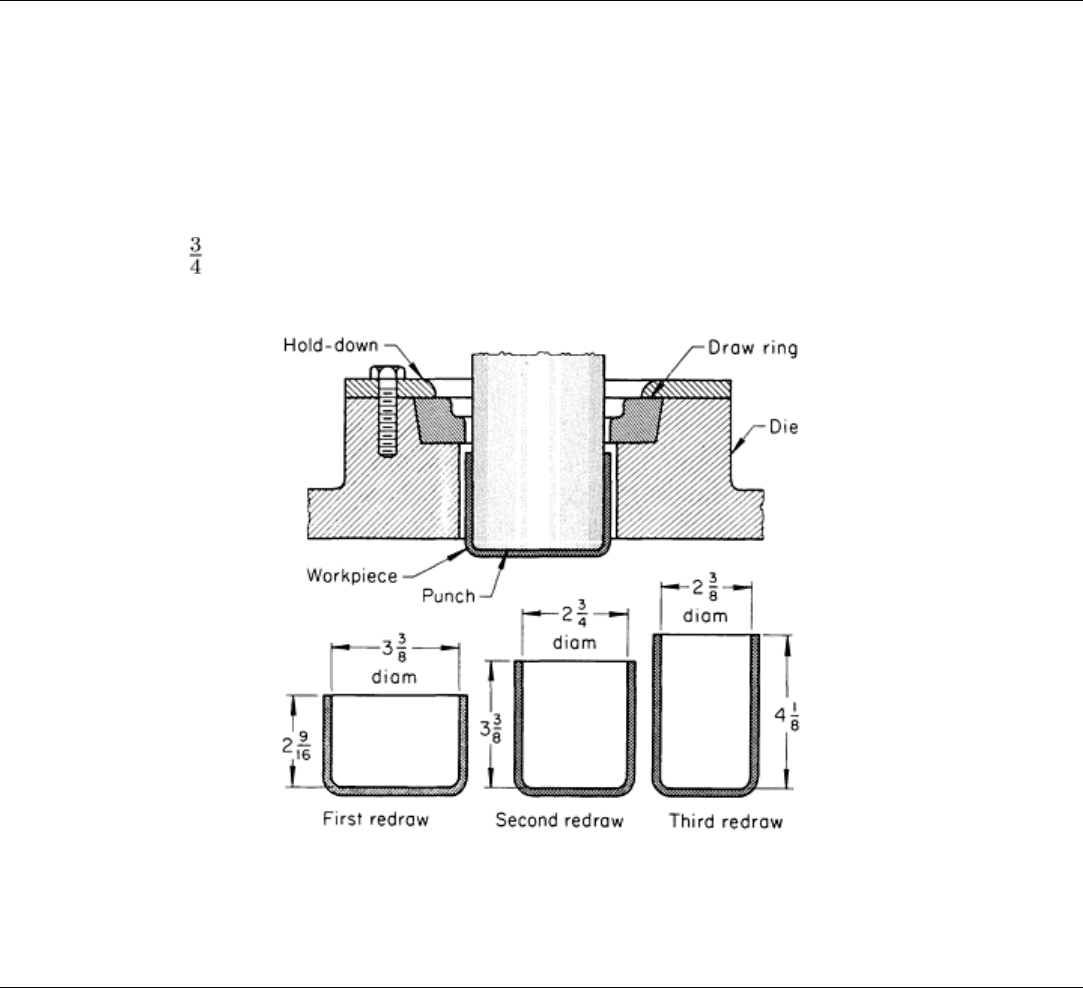
Deep Drawing
Tooling for Redrawing
Tooling for redrawing depends mainly on the number of parts to be redrawn and on available equipment. In continuous
high production, a complete die is used for each redraw; the workpieces are conveyed from press to press until completed.
In low or medium production, it is common practice to use a die with replaceable draw rings and punches. A die of this
type used for three redrawing operations is shown in Fig. 14; the three redraws were made by changing to successively
smaller draw rings and punches. The cup was drawn in a compound blank-and-draw die from a blank 1.7 mm (0.067 in.)
thick and 171 mm (6 in.) in diameter.
Fig. 14 Di
e in which draw rings and punches can be replaced for producing three successive redraws.
Dimensions given in inches
Deep Drawing
Drawing of Boxlike Shells
Square or rectangular shells can be formed by redrawing circular shells when there is no flange. When flanges are
required, the difficulty of producing acceptable boxlike shapes by drawing is increased. For deep-drawn square or
rectangular shells (for example, where the depth is greater than either length or width), the best approach for forming a
narrow flange is to allow sufficient stock and to form the flange after redrawing from a cylindrical shell.
Shallower boxlike shapes (for example, with proportions similar to the box illustrated in Fig. 15) can be drawn with a
flange, which is then trimmed to the desired width. Calculations for the area of a blank used for a circular workpiece
cannot be used for a square or rectangular box. These require metal in the bottom, ends, sides, and flange, as shown when
a box is unfolded (flat pattern, Fig. 15). The excess metal at the corners (shaded areas, Fig. 15) is a problem.
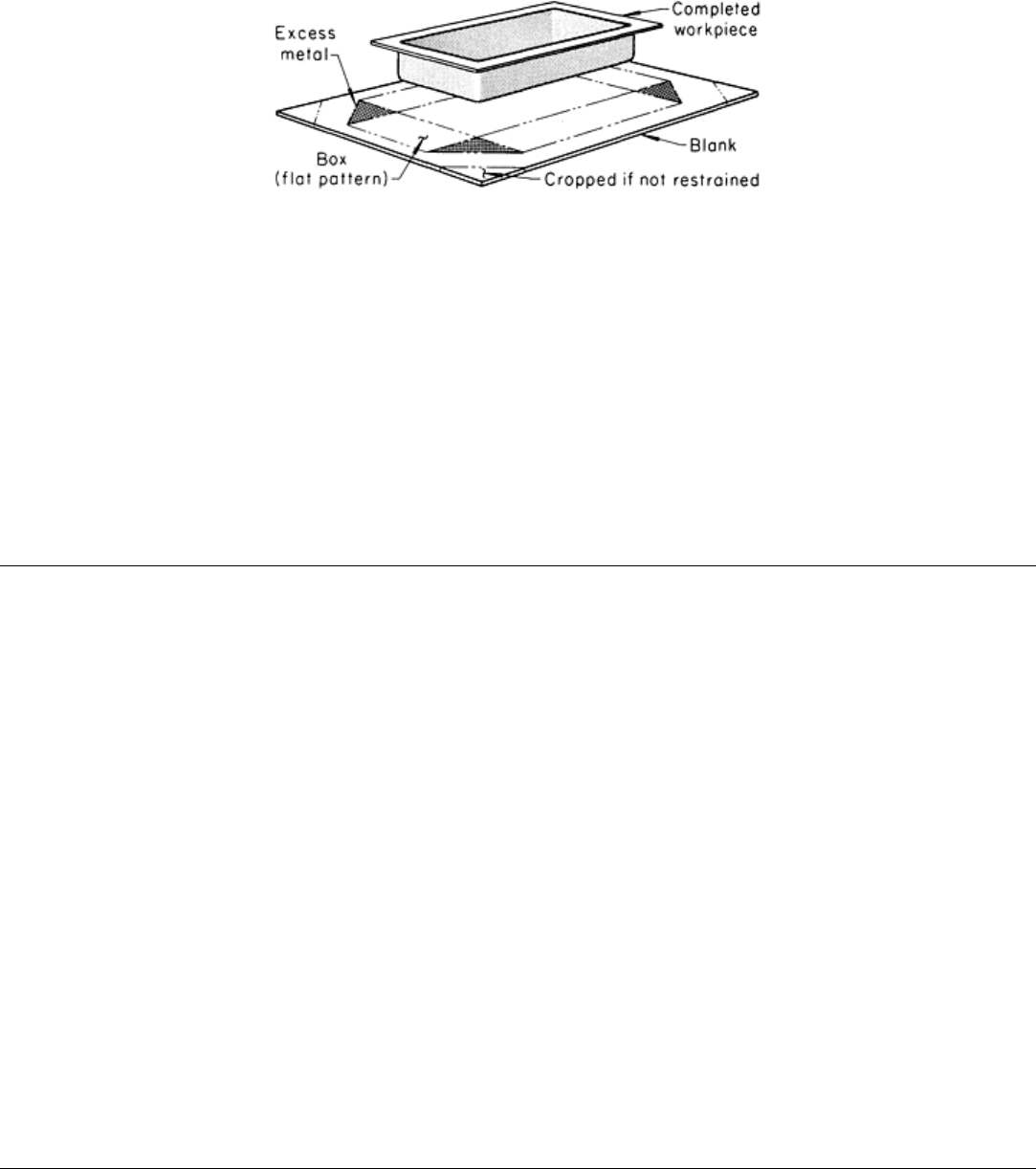
Fig. 15 Flanged rectangular box drawn from a blank with restraint at the corners. See text for details.
A seamless square or rectangular shell is made by drawing metal into the corners. The metal not needed for the corners is
pushed into the walls adjacent to the corner radius and into earlike extensions of the corners. The compressive stresses set
up when the metal in the corners is rearranged cause the metal to be thicker in the corners than in the sidewall or in the
original blank.
The more difficult draws are made more easily by using a carefully developed blank. There are methods of developing the
shape at the corners of a blank for a square or rectangular shell so that there is a minimum of excess metal. However, by
cropping the corners as shown in Fig. 15 and by using a blankholder, satisfactory parts can generally be made. Draw
beads in the blankholding surface surrounding the die are frequently used.
Deep Drawing
Drawing of Workpieces With Flanges
Regardless of whether the drawn workpiece is circular, rectangular, or asymmetrical, producing acceptable small-width
flanges on workpieces is seldom a problem. Flanged workpieces are usually drawn in two or more operations, frequently
with restriking as a final operation.
Cylindrical workpieces with wide flanges are troublesome to draw because of excessive wrinkling or fracturing in the
sidewall due to lack of metal flow. Even though the metal is restrained by a blankholder, it is difficult to obtain acceptable
flatness without special procedures.
Wide flanges on relatively large workpieces can be made flat by coining after drawing. Another means of dealing with
wrinkling, when design permits, is to provide ribs in the flange. This controls the wrinkling by allowing space for the
excess metal. Ribs are usually spaced radially around the flange, although circular, concentric ribs also are effective.
Rectangular, boxlike workpieces that have flanges are difficult to redraw in such a manner that the flange is
unaffected in redrawing operations. Therefore, it is common practice to draw the part first to a shallower depth and with
larger bottom radii than needed for shaping the final contour. The part is then re-formed in a final operation.
Asymmetrical workpieces that have flanges are often difficult to draw, particularly when neither draw beads in the
die nor ribs in the workpiece can be permitted. Under these conditions, considerable development is usually required to
determine the blankholder pressure that will result in the desired metal flow without using a larger blank than necessary.
Deep Drawing
Drawing of Hemispheres
In the drawing of a hemisphere, metal flow must be closely controlled for balance between excessive thinning in one area
and wrinkling in another. In the top illustration in Fig. 16, the punch has begun to stretch the round blank, which is
restrained by the blankholder, and the crown section of the hemisphere is being formed. At this stage, the crown section is
subjected to biaxial tension, which results in metal thinning. With correct pressure on the blankholder, thinning is in the
range of 10 to 15%. More than 15% thinning is likely to result in fracture of the crown section. In the top illustration in
Fig. 16, the portion of the blank under the blankholder has not begun to move.
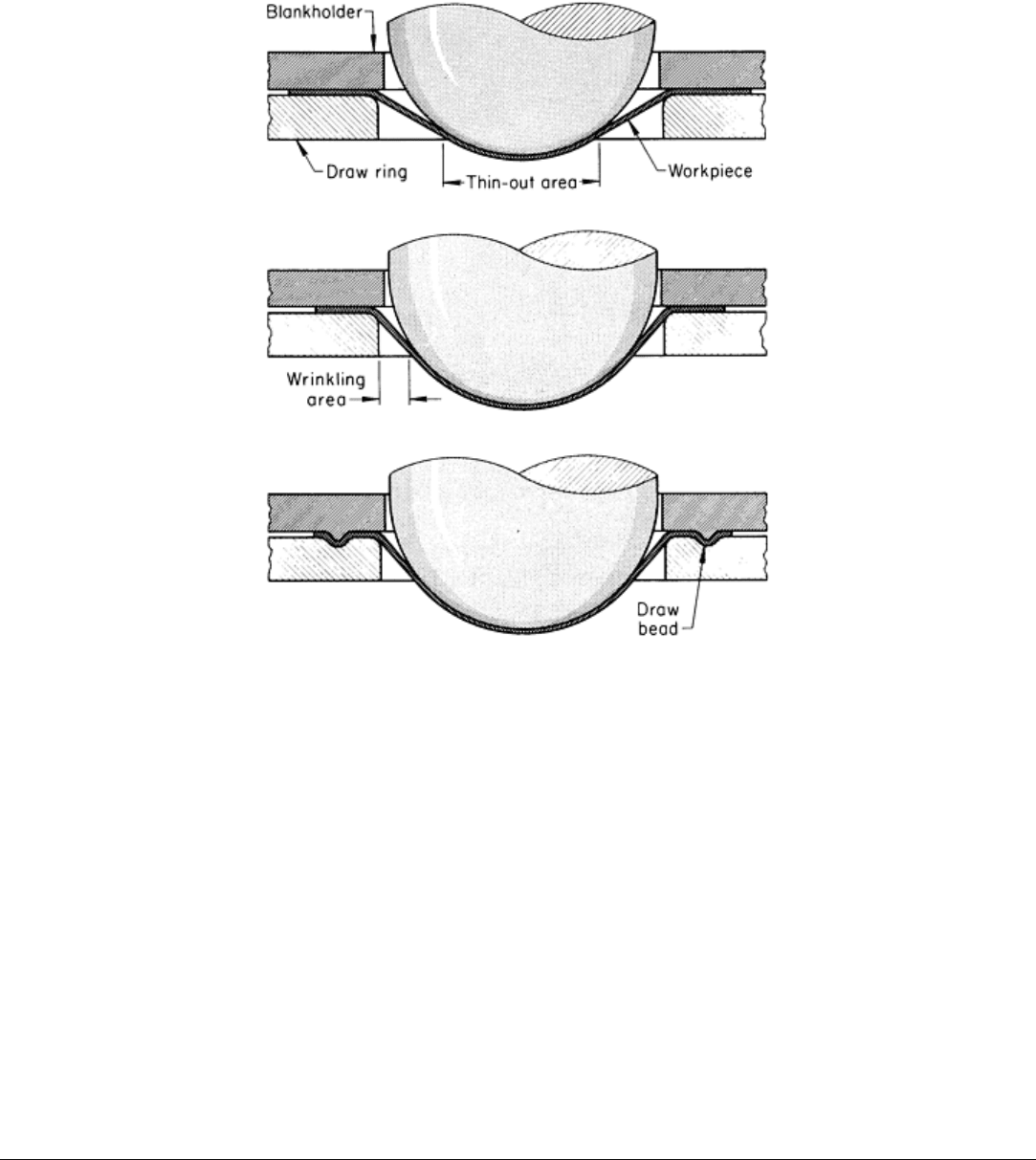
Fig. 16 Drawing of a hemisphere with and without a draw bead. See text for more information.
As the drawing operation continues, the metal begins to move from the blankholder, and a different problem develops
(center illustration, Fig. 16). Here the metal has been drawn into a partial hemisphere with unsupported metal in a
tangential slope between the punch and the clamped surface. Unlike the drawing of straight-sided shapes, the wide gap
(wrinkling area, Fig. 16) prevents the use of the draw ring bore as the means of forcing the metal against the punch
surface; therefore, the probability of wrinkling increases. Because the metal cannot be confined between the punch and
die, wrinkling is likely to occur in this area.
To prevent wrinkles, the metal must flow from the flange area and, at the same time, must be securely held in tension.
This requires an additional stretching force, derived from the portion of the blank that remains clamped. The area of metal
between the clamping surfaces is gradually reduced as the punch advances, but the draw radius offers some resistance
because the metal must follow a sharper bend as it moves into the die.
One means of controlling wrinkling is by the use of draw beads, as shown in the bottom illustration in Fig. 16. Another
means is by a sharp draw radius. Small radii are susceptible to metal pickup and, depending on sharpness, can produce
undesirable circumferential grooves in the hemisphere if the punch does not move at a steady rate.
Deep Drawing
Reducing Drawn Shells
Necking and nosing are used for reducing the diameter of a drawn cup or shell for a part of its height.
Necking. By the die reduction method, the work metal is forced into compression, resulting in an increase in length and
wall thickness. The thicknesses of a shell before and after necking are related by:
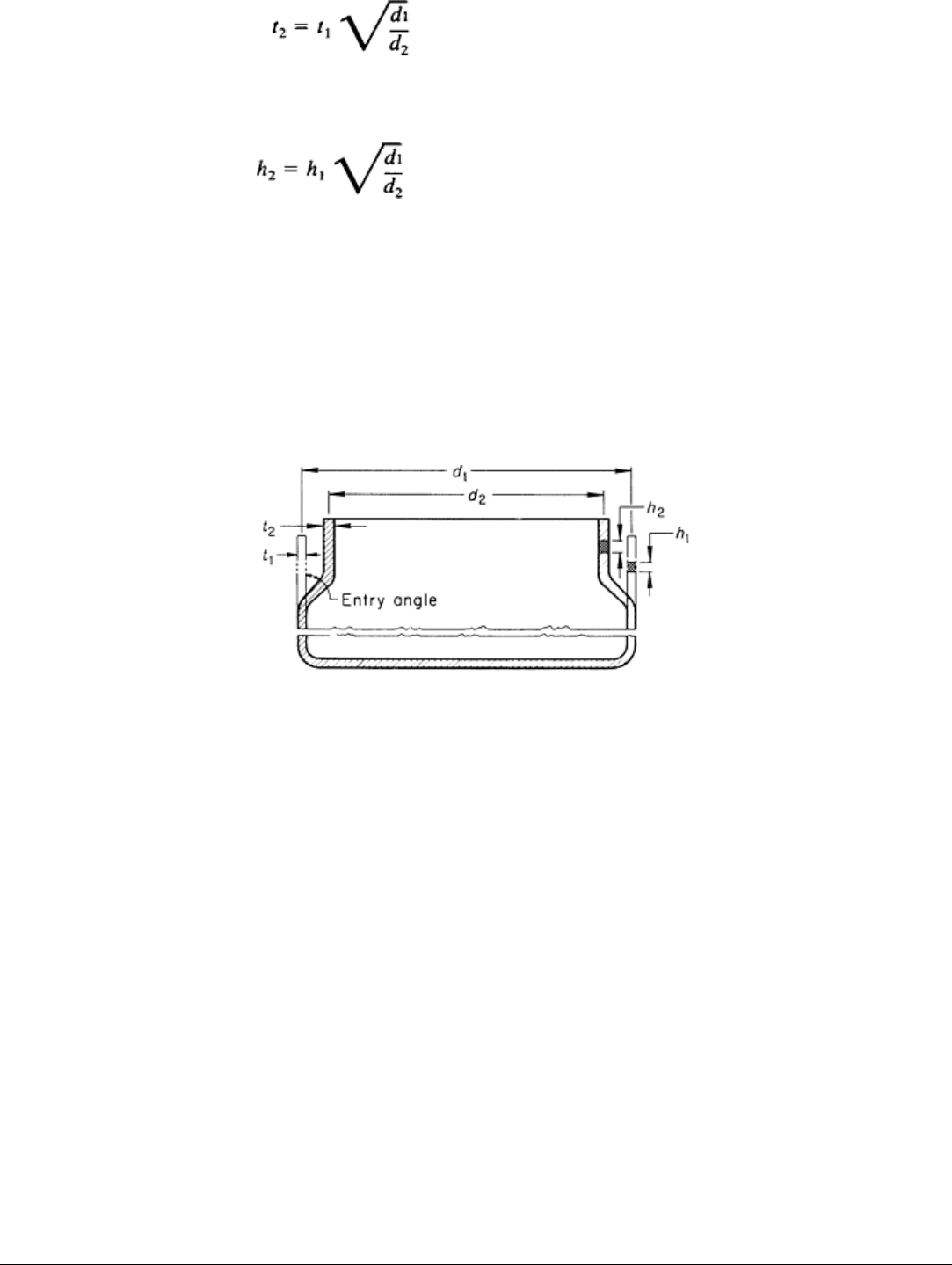
(Eq 9)
and heights before and after necking by the formula:
(Eq 10)
where t
1
is the shell thickness before necking, t
2
is the shell thickness in the necked area after necking, d
1
is the mean
diameter of the shell before necking, d
2
is the mean diameter after necking, h
1
is the unit of height before necking, and h
2
is the unit of height after necking.
Figure 17 shows the flow of metal in a necking operation. As the metal flows, paths of least resistance are taken.
Therefore, the actual values for t
2
will be less, and for h
2
greater, than those calculated from Eq 9 and 10.
Fig. 17 Flow of metal in the reduction of a drawn shell by necking. See text for details.
Necking results are uniformly better if the workpiece has been slightly cold worked. This provides added strength to resist
bulging in the column section and buckling in the section being reduced. The entry angle on the necking die is important
because the probability that the metal will collapse is decreased as the angle with the vertical becomes smaller. This angle
should be less than 45° (Fig. 17). If the angle is greater than 45°, a series of reductions may be necessary with localized
annealing between reducing operations. With a die entry angle less than 45°, thin-wall tubes can be reduced as much as
15% in diameter; thick-wall tubes can be reduced as much as 20%.
Nosing reduces the open end of a shell by tapering or rounding the end (usually by cold reduction) and is primarily used
in making ammunition. Shells are often machined before, instead of after, nosing. Shells are usually cold reduced as much
as 30% of their original diameter by nosing.
Ironing is the intentional reduction in wall thickness of a shell by confining the metal between the punch and the die
wall. When ironing occurs, the force needed to displace the punch often increases to a secondary maximum in the force-
displacement curve. The second force maximum can be of such magnitude that the shell will break. However, after
ironing has started and metal has been wrapped around the punch, the force is uniform and frequently less than that for
redrawing operations.
Ironing is seldom used with redrawing operations unless the amount of wall thinning is relatively small, because it results
in excessive die wear, causes workpiece breakage, and increases press tonnage requirements. If a shell with constant wall
thickness is needed, however, it can be obtained only by ironing.
Deep Drawing
